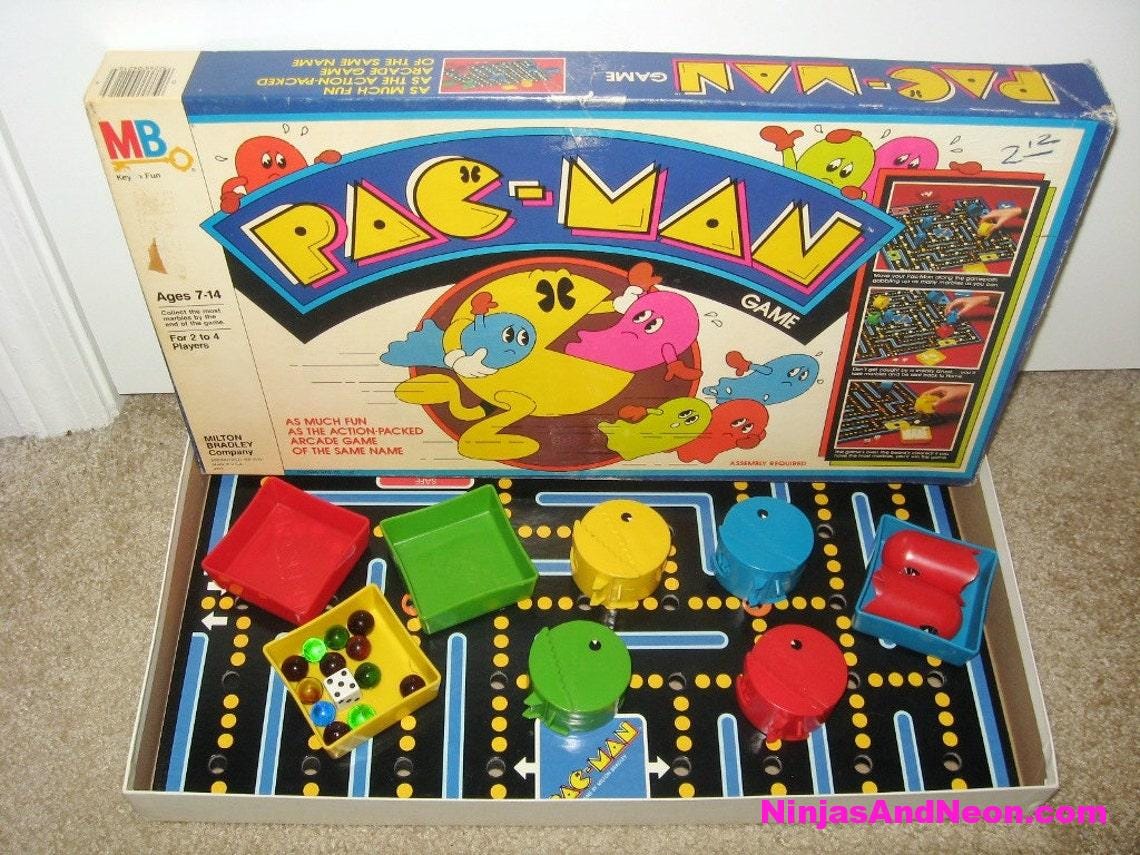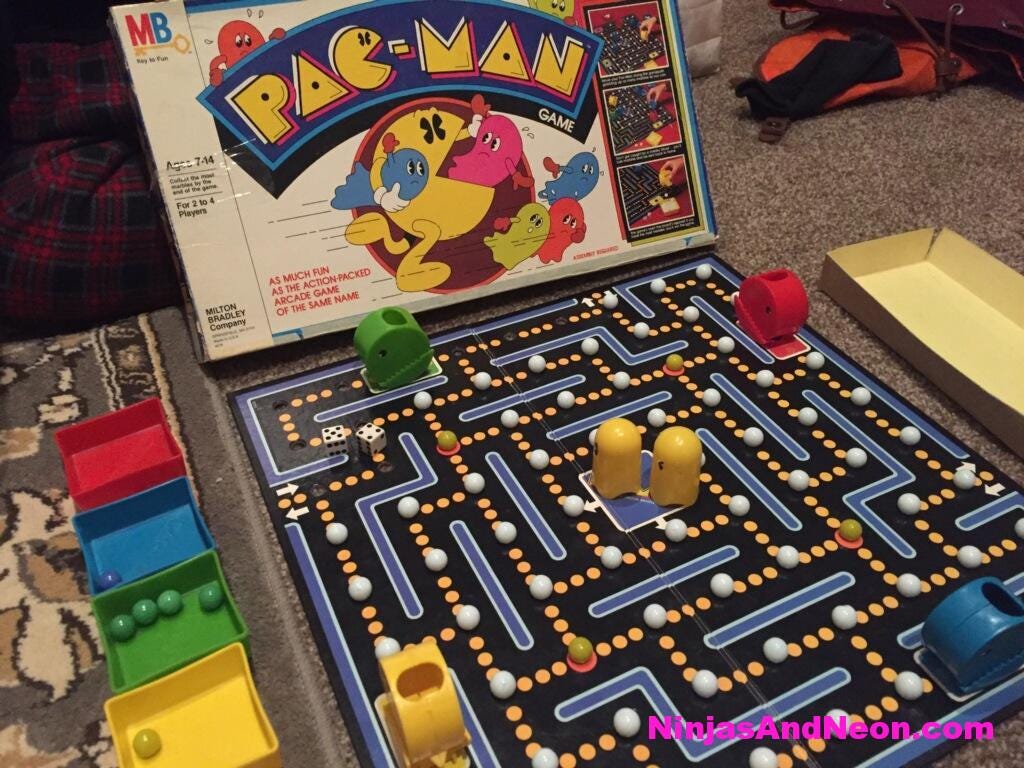Remembering the Pac-Man Board Game
Quarter saver, or money waster?
One Friday while riding the bus home from school a classmate asked me if I wanted to spend the night at his house. “We can play Pac-Man,” he teased in an attempt to sweeten the deal.
“Playing Pac-Man at home” meant a lot of different things in the early 80s. It could have meant playing one of the many home versions, like the ones released for the Atari 2600, or Intellivision, or maybe a home computer like the TI-99/4a, Apple II, VIC-20, or Commodore 64. It could have also referred to the miniature table top version of the arcade game, released by Coleco in 1981. It might have even referred to Coleco’s version of Pac-Man built into a watch. Visiting a kid’s house just to play a game on his watch seems kind of weird in retrospect.
My mind raced during the ride to the kid’s house that evening. When I arrived my friend suggested that we go ride bikes, but I could not be deterred. I was promised Pac-Man, and that’s what I wanted to play.
That’s when my friend went to his closet and returned with Pac-Man… the board game by Milton Bradley.
The board game version of Pac-Man resembles the arcade game, the way broken glass in a parking lot resembles a window. The power pellets and energizer pellets that Pac-Man eats in the arcade version are represented by marbles, which sit in small indentations around a game board that resembles the arcade’s maze. Up to four people can play (there are four “Pac-“Men” in different colors). While maneuvering around the board, the multiple Pac-Men must avoid two plastic ghosts that are also moved about the maze.
On each turn, players roll a pair of dice. One designates how many spaces the player’s Pac-Man will move, while the other determines how far they can move one of the ghosts. Like the arcade version, the goal of the game is for Pac-Man to move around the board, collect power marbles, and avoiding the ghosts. With only two players you can be sure your opponent will be moving a ghost toward you, but with three or four players, it’s a little too easy for players to gang up on someone and swarm them with the ghosts. Like the arcade game, if Pac-Man eats one of the energizer pellets they can also eat a ghost and send it back to the starting cage. The game ends when all of the marbles have been removed from the board. Whichever player has the most marbles wins.
In many cases when a movie, television series, or arcade game is made into a board game, the result is something that uses licensed characters but barely resembles the original source material. If anything, Milton Bradly’s Pac-Man board game is loyal to a fault. The rules are almost identical to the arcade game, save for the addition of multiple players. The most exciting thing about the Pac-Man board game is that it features Pac-Man. Once you get past that, the game itself isn’t terribly exciting.
My friend and I finished the game in about ten minutes. I don’t remember who won, but I do remember him asking me if I wanted to play again.
“Can we go ride bikes instead?” I asked.





We had this game in our household when I was growing up. My brothers and I would play it pretty often. Like you described, it was simple, but so were we when we were young. :) I haven’t thought about this game in years. Nice topic Flack!
I remember Pac-Man, but don't remember the other boardgames. I probably would have liked them better, but then, already having a 2600, I would have just played that instead.